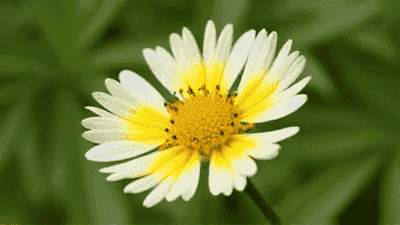
Gardening brings joy and beauty to your home, but it also comes with its challenges. Flower diseases can threaten the health of your plants, leading to reduced blooms or even plant death. Understanding common flower diseases, their symptoms, and prevention measures is essential for maintaining a vibrant garden.
Flower diseases can be caused by a range of factors, including fungi, bacteria, viruses, environmental conditions, and pests. Identifying the type of disease affecting your flowers is crucial for implementing appropriate treatment and preventive measures.
Fungal Diseases: These are the most common types of flower diseases. Fungi thrive in moist conditions and can spread rapidly if not controlled. Symptoms often include spots on leaves, powdery mildew, and root rot.
Bacterial Diseases: Bacterial infections are less common than fungal diseases but can be equally destructive. They may cause wilting, yellowing of leaves, and rotting of plant tissues.
Viral Diseases: Viruses can cause mottling, yellowing, and stunted growth in flowers. Infected plants may show unusual leaf patterns or color changes.
Environmental Stress: Environmental factors such as extreme temperatures, improper watering, and soil nutrient deficiencies can lead to diseases that affect plant health.
Pests: Insects and other pests can introduce diseases to flowers, either by directly feeding on them or by transmitting pathogens.

Symptoms: Powdery mildew appears as white, powdery spots on leaves and stems. Affected plants may exhibit stunted growth, yellowed leaves, and reduced flowering.
Causes: This fungal disease thrives in warm, dry conditions with high humidity. Poor air circulation can exacerbate the problem.
Prevention Measures:
Symptoms: Downy mildew manifests as yellow spots on the upper side of leaves, while the lower side shows a grayish, fuzzy growth.
Causes: This fungal disease prefers moist, humid conditions and can spread rapidly in dense plantings.
Prevention Measures:
Symptoms: Black spot disease causes dark, circular spots on leaves that may have fringed edges. Leaves may turn yellow and drop prematurely.
Causes: This fungal disease is common in roses and thrives in warm, moist conditions.
Prevention Measures:
Symptoms: Botrytis blight shows as gray mold on flowers and leaves, often appearing in cool and damp conditions. Affected flowers may wilt and rot.
Causes: This fungal disease thrives in high humidity and poor air circulation.
Prevention Measures:
Symptoms: Root rot leads to yellowing leaves, wilting, and stunted growth. Infected roots may appear brown and mushy.
Causes: Overwatering and poor drainage create favorable conditions for root rot-causing fungi.
Prevention Measures:
Symptoms: Leaf blight causes rapid yellowing and wilting of leaves, often leading to its browning or blackening.
Causes: This disease can be caused by various fungi and bacteria and often affects young plants.
Prevention Measures:
Symptoms: Viral diseases can present as mottled, distorted leaves, stunted growth, and poor flowering.
Causes: Viruses are often spread through insect vectors, such as aphids or thrips.
Prevention Measures:
Several pests can introduce diseases to your flowers or make them more susceptible to infections.
Description: Small, soft-bodied insects that suck sap from plants.
Impact: They can transmit viruses and weaken plants by draining nutrients.
Prevention Measures:
Description: Tiny, slender insects that feed on flower and leaf tissues.
Impact: They can cause flower distortion and transmit viruses.
Prevention Measures:
Description: Microscopic pests that create fine webbing on affected plants.
Impact: They cause leaf discoloration, stippling, and can transmit viral diseases.
Prevention Measures:

In addition to pests and diseases, environmental conditions can impact the health of your flowers.
Overwatering can lead to various problems, including root rot and fungal diseases. Signs of overwatering include yellowing leaves and drooping plants.
Prevention Measures:
Nutrient deficiencies can weaken plants and make them more susceptible to disease.
Prevention Measures:
Flowers can be sensitive to temperature fluctuations, which may stress them and invite disease.
Prevention Measures:
Poor air circulation can create favorable conditions for fungal diseases.
Prevention Measures:
An effective strategy for dealing with flower diseases and pests is the implementation of an Integrated Pest Management (IPM) approach. This holistic method combines preventive measures, biological controls, and the judicious use of chemical treatments.
Monitoring: Regularly inspect your garden for signs of disease or pests. Early detection is crucial for successful intervention.
Cultural Practices: Implement practices that reduce disease occurrence, such as crop rotation, proper watering techniques, and soil amendments.
Biological Control: Utilize natural predators and beneficial insects to control pest populations.
Mechanical Control: Use physical barriers, such as row covers or traps, to protect plants from pests.
Chemical Control: When necessary, use pesticides and fungicides in a targeted and responsible manner, following all recommended guidelines.

Keeping your flowers healthy and vibrant requires vigilance and understanding of common diseases, their symptoms, and effective prevention measures. By familiarizing yourself with the signs of flower diseases and implementing appropriate strategies, you can create a thriving garden that brings beauty and joy to your home.
Regular monitoring, proper cultural practices, and an integrated approach to pest management will help ensure that your flowers remain healthy and blooming throughout the seasons. Whether you are a novice gardener or a seasoned green thumb, staying informed about flower diseases and their prevention is key to achieving a successful and lush garden.